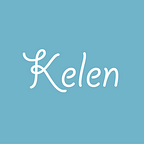From Ethiopia to France via Denmark….
Etiyé Dimma Poulsen was born in Ethiopia in the province of Aroussis and lived in this region until the age of six, then in Tanzania and Kenya with her parents. At the age of fourteen, her family moved to Denmark.
She studied art history at university, then taught art. At first, Etiyé Poulsen devoted herself to oil painting on canvas by painting landscapes. She is made to feel that there is no place for her in the market, which is why she reluctantly quit painting.
At 22, she moved to France, where she met the ceramicist Michel Moglia, who introduced her to metal structures.
Her first sculpture was born by accident …
The first sculpture was born by chance fifteen years ago. She was playing with a piece of wire mesh to which she gave a conical shape. Subsequently covered with earth and cooked according to a particular method of cooking taught by Michel Moglia, the small grill thus transformed, became the first character of the mysterious people who compose the work of Etiyé Dimma Poulsen.
Since then, she has refined her creative approach while keeping the slender line of her first sculpture. They are all made of the same frame, surrounded by a sort of wire mesh maintained by a reinforcing bar structure and covered with a thin layer of clay. Etiyé Dimma Poulsen only sculpts bodies extended by a small head that she dresses in natural pigments, available in shades of ochre, red, beige, brown or blue.
It represents figures in their primary essence …
“I always try to shape or represent figures in their primary essence.”
Beings in their most naked, most primitive aspect, as symbols of the fundamental existential condition: loneliness, fear, desire. ”
Etiyé’s silhouettes are refined, dismembered, without any artifice. the eyes are drawn with a simple line which gives the face a distant and mysterious look.
Her favorite moment is magic: the fusion of the elements earth and fire…
The stage that she considers to be the most exciting of her work is that of baking and taking it out of the oven, where her characters cook at a thousand degrees. She is fascinated by these characters who emerge from the ashes after cooking; but also the colors that are generated in natural chemical processes.
She draws her inspiration from traditional African art but also from ancient Greek (Mycenaean) art, prehistoric Venus, oriental art, etc.
It was upon his arrival in France that Etiye discovered African arts in Paris, at the Museum of African and Oceanic Arts and at the Dapper Museum. If she recognizes that the dressing of her sculptures can be inspired by the primitive arts, it is as much the arts of Africa as of Oceania, in particular of the aboriginal arts.
“My work has affinities with certain African arts, but at the same time that doesn’t mean anything. The slender forms have always spoken to me, perhaps they echo images of childhood, but you can’t relate this formal research work to one culture or another. It is true that the cracked surface of my sculptures is close to what one can find in Africa on mud houses whose earth is dried and cracked by the sun , but that’s no reason to label myself as an African artist, it doesn’t mean anything! “
